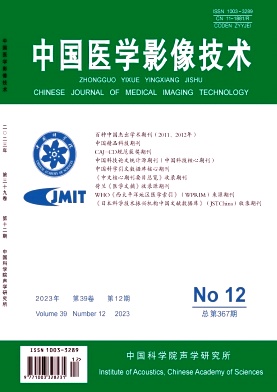Projection Screen Inspired by Human Skin for Use in Pseudo Windows
Q4 Medicine
引用次数: 0
Abstract
When we consider viewing the surface of human skin, the skin gives us a sense of natural depth, while, in contrast, the surface of a plastic does not. In our research program, learning from the structure of human skin, we fabricated screens which consist of multilayers made of translucent sheets coated with TiO2 nanoparticles. The feeling of natural depth from the screen can be considered to come from the multiply-observed images produced by phase differences due to the translucent multi layers. Additionally, we think that the feeling of natural depth from our 3D imaging screen comes from the reflection/diffusion differences of light depending on its wavelength as well as human skin. This is because that the spectral distribution measurements of these translucent sheets suggest that blue light with short wavelength is scattered on the surface of the first layer, while red light with long wavelength permeates to the under layers. The screen has a number of potential applications, since it is easy to prepare, low cost, and applicable to a large area. One of promising candidates is, of course, in the application as 3D projection screen. This is because 2D images projected on the screen can be automatically transformed into 3D images with a stereoscopic background. And considering that this system is applicable to not only reflection type but also transmission type, one of interesting candidates is for use in pseudo windows. By connecting an external camera, the screen can be utilized as a pseudo window on a real wall. The pseudo window can be expected to provide an open feeling while keeping high heat insulation, sound insulation, and privacy.受人体皮肤启发的投影屏幕用于伪窗口
当我们考虑观察人类皮肤的表面时,皮肤给我们一种自然的深度感,而相比之下,塑料的表面却没有。在我们的研究项目中,我们借鉴人类皮肤的结构,制作了由涂有二氧化钛纳米粒子的半透明薄片组成的多层屏幕。从屏幕上看到的自然深度的感觉可以认为来自于由于半透明多层的相位差而产生的多重观察图像。此外,我们认为3D成像屏幕的自然深度感来自于光的反射/扩散差异,这取决于它的波长以及人体皮肤。这是因为对这些半透明薄片的光谱分布测量表明,波长较短的蓝光散射在第一层的表面,而波长较长的红光则渗透到下层。该筛有许多潜在的应用,因为它易于制备,成本低,适用于大面积。其中一个很有前途的候选者当然是在应用中作为3D投影屏幕。这是因为投影在屏幕上的2D图像可以自动转换为具有立体背景的3D图像。考虑到该系统不仅适用于反射类型,也适用于传输类型,其中一个有趣的候选对象是用于伪窗口。通过连接外部摄像头,屏幕可以用作真实墙壁上的伪窗口。伪窗可以提供一种开放的感觉,同时保持高隔热、隔音和隐私。
本文章由计算机程序翻译,如有差异,请以英文原文为准。
求助全文
约1分钟内获得全文
求助全文
来源期刊

中国医学影像技术
Medicine-Radiology, Nuclear Medicine and Imaging
CiteScore
0.10
自引率
0.00%
发文量
21620
期刊介绍:
Chinese Journal of Medical Imaging Technology (CJMIT, CN 11-1881/R; ISSN 1003-3289; CODEN ZYYJEI, monthly)is an academic journal on medical imaging science and technology. The journal is sponsored by the Chinese Academy of Science (CAS) and distributed around the world. It is the periodical of the Statistical Source of Chinese Science and Technology Papers and the Chinese Core Academic Journal. CJMIT started publication in 1985 and has published 127 issues since then. CJMIT is published with big 16 mo, 160 pages and about 350,000 Chinese characters format and with circulation of about 10,000 copies. The journal mainly cover the fields of radiology diagnosis, X-ray, CT, MRI, ultrasound imaging diagnosis, nuclear medical diagnosis, endoscope diagnosis and long distance diagnosis.
 求助内容:
求助内容: 应助结果提醒方式:
应助结果提醒方式:


